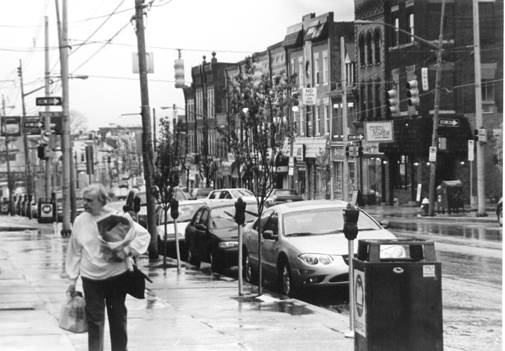All Nonfiction
- Bullying
- Books
- Academic
- Author Interviews
- Celebrity interviews
- College Articles
- College Essays
- Educator of the Year
- Heroes
- Interviews
- Memoir
- Personal Experience
- Sports
- Travel & Culture
All Opinions
- Bullying
- Current Events / Politics
- Discrimination
- Drugs / Alcohol / Smoking
- Entertainment / Celebrities
- Environment
- Love / Relationships
- Movies / Music / TV
- Pop Culture / Trends
- School / College
- Social Issues / Civics
- Spirituality / Religion
- Sports / Hobbies
All Hot Topics
- Bullying
- Community Service
- Environment
- Health
- Letters to the Editor
- Pride & Prejudice
- What Matters
- Back
Summer Guide
- Program Links
- Program Reviews
- Back
College Guide
- College Links
- College Reviews
- College Essays
- College Articles
- Back
Finding Vivian Maier
It was a real-life detective mystery for John Maloof when, in 2007, he bought a box of undeveloped photographic negatives at a storage auction for about 400 dollars. He was searching for vintage photographs for his history book on a Chicago neighborhood when he discovered the work of Vivian Maier, an elusive woman who piqued his curiosity. The documentary ‘Finding Vivian Maier’, which was released on March 28, leads the audience with Maloof on his search to unearth the psyche of the reclusive nanny who took over 100,000 legendary photographs, unbeknownst to the art world.
It wasn’t a simple search. Maier had shielded herself from any human connection beyond the powerful affection she held for her juvenile wards. What remained for Maloof to decipher were the words of those children and the meticulously hoarded artifacts of her deceptively placid life—the grocery receipts, mountains of gruesome newspaper articles and antique collectibles that clogged storage lockers. After search in the National Archives roused flimsy leads on her family history, Maloof traveled to a rural French village (population 250) to trace Maier’s ancestry.
What Maloof found was an anomaly, an eccentric, a creative genius. The last to be described as “cuddly”, Maier guided her surrogate children with the same blatant honesty, childlike humor and deeply entrenched tenderness that empathize all who glimpse her photographs. She held a powerful disdain for “tchotchkes”, the sugar-coating of life, whether on the street or on her little girl’s windowsill (a former ward remembered her nanny dousing delicate glass toys in a bucket of industrial-strength ammonia). Maier’s mental chaos affected her actions to the point that she violently abused one child, abandoned another in an alley, and shut them all out from her reclusive abode. One remembered Maier taking her to the city stockyards, where butchered livestock was the first time she had ever seen death. But Maier was also beloved for taking the children on adventures regarded as too “juvenile” by their reasonable, stoic parents. Maier forged ahead of the children, snapping photographs in the glittering downtown streets, the slums and the wastelands of cities, to a wild strawberry garden in the misty enclaves of a forest found only in fairy tales, where they would bury her lonely body years later.
Maier did not flinch with a Rolleiflex clasped to her waist. The angle of the lenses allowed a withdrawn woman to preserve both her dignity and the genuine expression of her subject. Her iron-clad intention to document the quintessence of grisly street life gave her an intimacy with strangers that she could not grasp through conversation or body language.

Similar Articles
JOIN THE DISCUSSION
This article has 0 comments.
